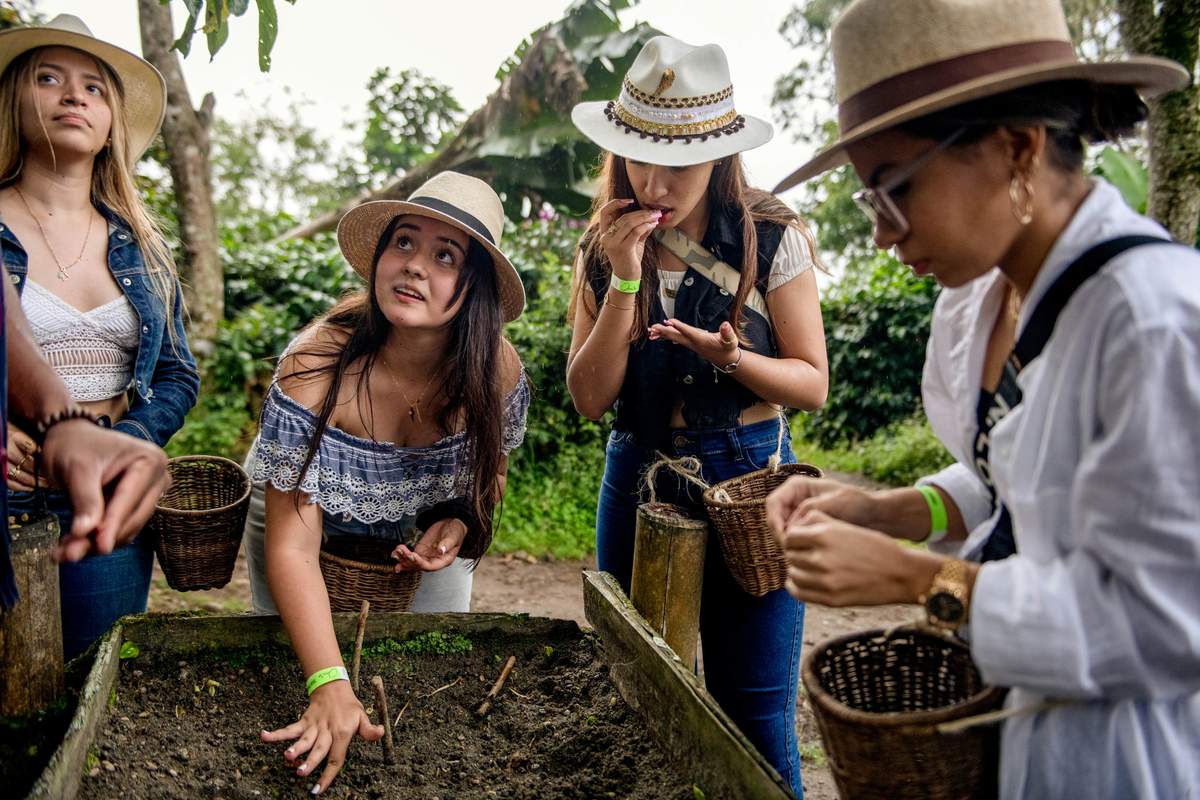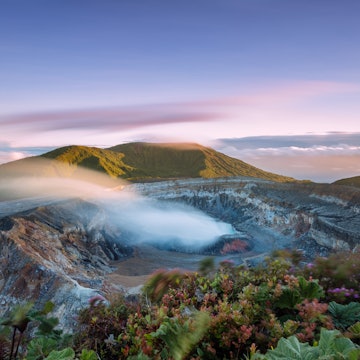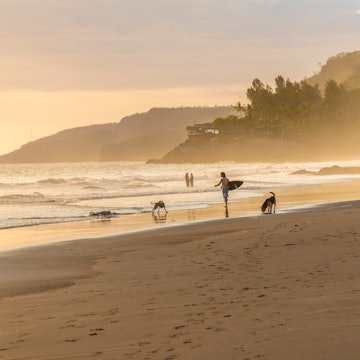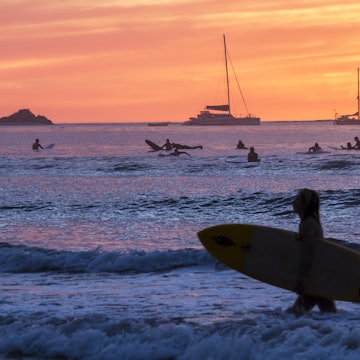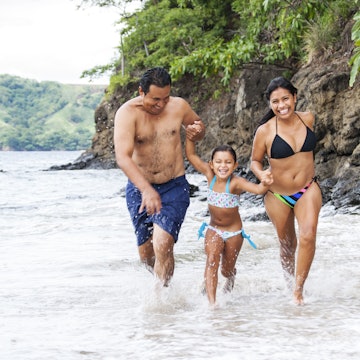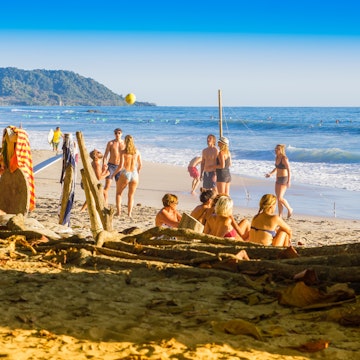

The San Blas Islands in Panama. Cris Young/Shutterstock
When I first heard about the San Blas Islands, an archipelago of roughly 365 islands off the coast of Panama, it instantly became my travel fixation. Untouched beauty, the Indigenous heritage, thrilling snorkeling spots and fresh-off-the-tree coconuts – the islands have it all. So when I was planning a trip to Central and South America, making it to the tropical chain was an anchor.
The islands are best accessed by boat, and numerous companies service the route, each offering their own twist on the trip. The obvious option, a looping island hop that starts and ends in Panama, is ubiquitous, but the second and more popular path really excited me: starting in Panama, sailing through the San Blas chain for several days, then disembarking in Cartagena, Colombia.
Suddenly, it was all I could think about – six days on a sailboat, drifting between islands overflowing with palm trees and dripping with white sand beaches, enjoying fresh seafood delivered right to the boat, sleeping on the deck under the stars, snorkeling with new friends as we jump continents.
Sign me up.

Part 1: Departure
I opted to go with Blue Sailing, which operates multiple boats, each with its own crew and distinct vibe. I made my booking a bit too close to my departure date and put myself on the waiting list for all vessels going from Panama to Colombia during my window of availability (the boats go back and forth, so travelers can journey in either direction).
Luck struck: A few days later, the Sovereign Grace offered me a spot. Before I knew it, I was being picked up in Panama City and driven about 2 hours to Puerto Lindo, a small seaside town on the Caribbean side of Panama. There I met my 19 fellow passengers plus the crew, which included Manu, a genius captain-gourmet-chef combo; Lindsey, the ever-smiling first mate; and Gracie, their dog and the uncontested boat mascot.
Our group, mostly travelers in their 20s and 30s, bonded fast. Solo backpackers, couples and friends from across the world had converged on this 65-ft steel-hulled sailboat for a week of adventure, sun and no cell service. Lots of logistics and icebreakers ensued before we boarded the boat around sunset, ate Manu’s homemade hummus bowl and took off for the San Blas.
Things then got…a little hairy. While I kept everything in my stomach, some of the seasick-prone passengers faced a tough night. By the time we reached the San Blas in the early hours of the next morning, the beauty was more than enough to make up for it.
The boat is homey, with lots of silly decor and a Venezuelan playlist constantly thumping. Everyone bunks together, with up to eight people in a room. If that sounds too cozy, trust me, it really doesn’t feel it. There are plenty of places to lounge if the bed areas are cramped. I opted to sleep on the deck every night, eager to enjoy the overwhelmingly abundant canopy of stars.
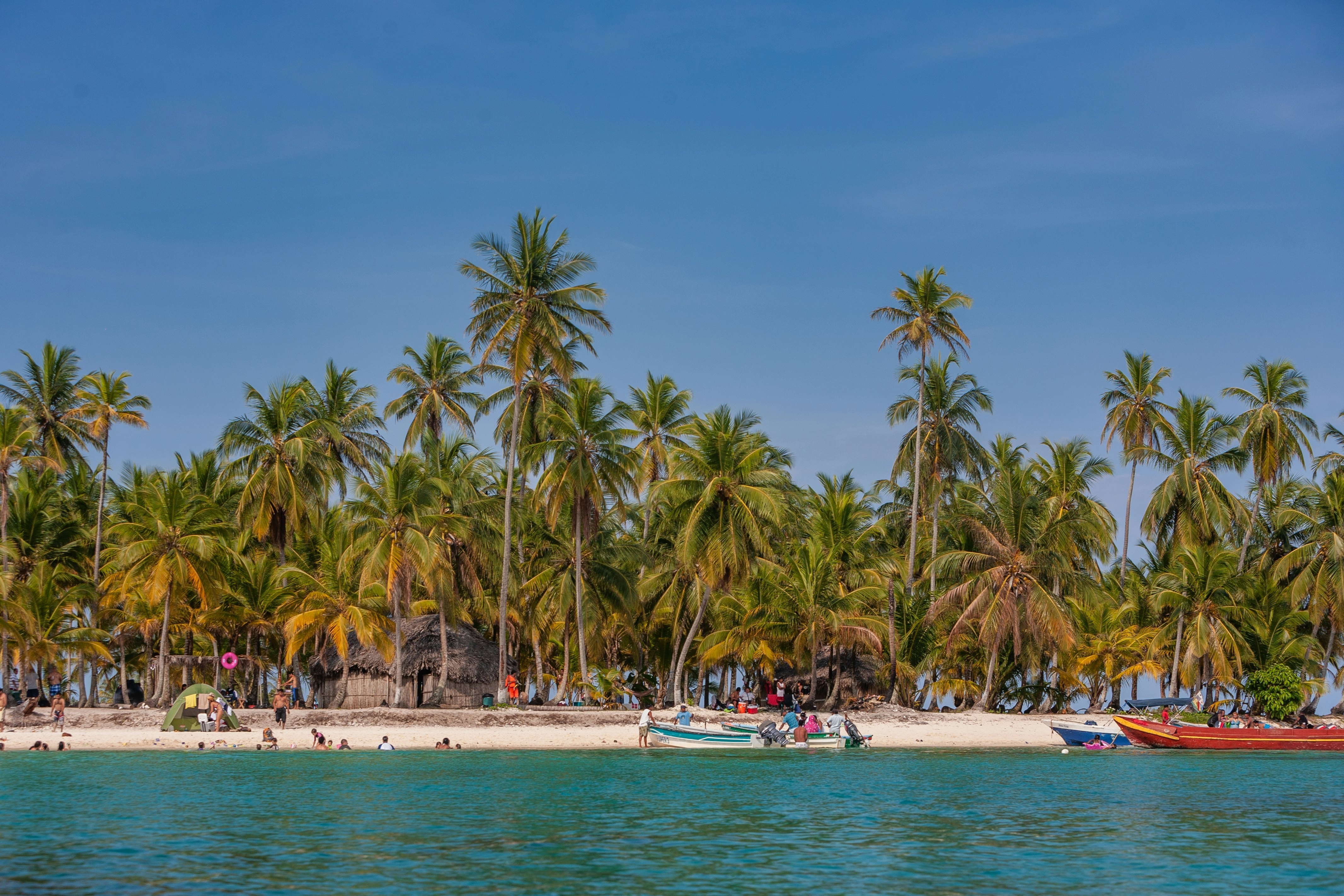
Part 2: Hello, paradise
Waking up in the San Blas felt like opening my eyes to a living postcard.
We anchored near one of the many islands and hopped onto a dinghy to take us to shore, where we proceeded to have the beach day of our dreams at Banedup Caye Holandés, a small island that you could walk the entire perimeter of in 20 minutes. Complete with a dense palm tree jungle, white sand, hammocks nestled into crystal blue water and a volleyball net and barbecue space, the setup at Banedup is unique in the area. The vast majority of the islands are void of inhabitants altogether or host only a small number of Guna people.
About 62,000 Guna people live in the San Blas across 49 villages (versus 365 islands). The Indigenous people of the archipelago, the Guna carry a set of laws and traditions specific to them, and they enjoy a high level of autonomy from mainland Panama. After centuries of fending off Spanish colonizers, the Guna gained the right to establish their own laws during a 1925 revolution. Their language, Dulegaya, is the most common on the islands, though Spanish is also widely spoken.
The day passed in slow bliss: swimming, playing games, reading in ocean hammocks and toasting with coco locos (fresh coconuts filled with rum). The Guna harvest coconuts as their main source of income, and I cannot even count how many I consumed.
Over the next 3 days, we drifted from island to island, snorkeling, sunbathing and savoring freshly caught lobster delivered right to the boat by local fishers and pasta dinners cooked by Manu. Evenings turned into dance parties and starlit conversations.
A personal highlight was swimming with a new friend, Paul, from the island where our group was stationed to the next one over. We met a Guna family selling traditional molas (elaborately embroidered fabric panels) and small hand-carved wooden boats. We left with some treasured souvenirs.

Part 3: Land Ho!
After 3 magical days, it was time for the daunting 2-day open-sea journey to Cartagena. Those who were seasick on the first night’s travel topped up on Dramamine and buckled in for the ride, but it was much less nauseating now that everyone was used to the rocking of the waves. For a little less than 40 hours, we sailed to Colombia, but the time flew by as we milled about the deck, looked for dolphins and enjoyed the new relationships we had made.
In the wee morning hours, after seeing sunrise over the water, the Sovereign Grace reached Cartagena. It was a sad moment, with the beauty of the San Blas behind us and all about to go our separate ways. We ate breakfast as Lindsey handled immigration, then we planned one big night out in Cartagena to commemorate our journey. It was a bittersweet goodbye, as we'd had quite the journey, but there were more beautiful things ahead.
As a solo traveler, arriving in Colombia with 19 instant friends, all with our own plans and routes ahead, was an unexpected gift. I spent my first few days in Cartagena exploring the city with some of the passengers from the boat before heading up the coast with some others. We even made plans to reunite in Rio for Carnaval, and I have seen several of them since, with visits happening back in our home countries!

Part 4: How to make it happen
Types of boats
There are two main options when taking this journey: speedboat or sailboat.
The speedboat trips, mainly run by San Blas Adventures and a bit cheaper than the sailboats, are typically around 3 days and drop you off in (or pick you up from, depending on your direction) Sapzurro, a town on the Colombian side of the border. There are not a ton of fast and easy options for getting to or from Sapzurro (mostly bus to a boat to another boat), and you may spend 2 full days getting to your departure point.
Sailing is largely considered the more scenic and comfortable option. Blue Sailing has several vessels, depending on your group and personal preference. Do your research before selecting a boat, as it will have a big impact on your trip.
Costs
My trip on the Sovereign Grace cost 695 US dollars (US$), with all meals included. This is on the lower end of Blue Sailing’s spectrum, with boats ranging from US$680–780. While advertised as a 5-day trip, it’s really 6, with an initial day of passport immigration and orientation.
There are a few extra costs, such as the shuttle from Panama City to the port, which cost me US$25, or 97,000 Colombian pesos (COP$). You can take a public bus instead for US$10 (COP$39,000), but there are only morning buses, so you have to leave a full day earlier and stay the night in the port town. You will also need to pay a US$20 (COP$78,000) cash fee to the Guna people for entrance to the San Blas.
Bring lots of cash for the journey, to pay for both the trip and the fees. Blue Sailing recommends starting to withdraw money a few days in advance to avoid restrictions on withdrawals.

When to book
As soon as you know your tentative dates, book your trip. I got lucky with my last-minute spot, but these boat trips are highly desired and can sell out well in advance during peak season. If your dates are flexible, you can afford to wait to sign up.
Weather
My group was blessed with wonderful weather throughout our trip, though that’s not always the case. A storm can be tough, as there is no real shelter on many of the islands, and being aboard the ship could get rocky. Take into consideration the time of year when booking your trip.
December to April is considered the dry season and the optimal time to visit the islands. However, May to September can be calmer, with less intense sunshine and fewer visitors.
October and November are known to be the wettest and most overcast months, with some tropical storms. There will still be some sunshine; it just tends to be a bit unpredictable.
Packing
Pack a few days' worth of light clothes, a flashlight, some swimsuits, a towel, a light sweater, bug spray, seasickness medication, electronics and chargers (there are plugs on board to recharge), a refillable water bottle, earplugs, toiletries, books and reading materials, sunscreen and lip balm with SPF. My lips got burnt on the second day, and it was not a fun experience. You will be under heavy sun, and there is nowhere to hide except below deck or under a palm tree.

Facilities on board
There is no wi-fi on board, which was a big personal selling point for me. No service for 6 days? I am so there.
Luggage is stored below deck and is largely inaccessible during the trip (though if you really need something, a member of the crew will happily retrieve it). Passengers are told to pack a smaller backpack with all they will need for the 6 days.
Food and drink
All food plus water, tea and coffee is taken care of on the boat – and is delicious! You’re free to bring any snacks, and guests are encouraged to bring any alcoholic beverages they might want. Most of us went to the grocery store before the trip and loaded up, though there is also a small convenience store at the port for supplies.
Immigration and onward travel
Blue Sailing handles the whole passport process at both ports. For our group, it took a few hours, but it can take up to a day. For this reason (as well as the possibility of inclement weather), Blue Sailing recommends that you not plan your onward journey too soon after the boat docks. Your arrival at the port could be at any time on that last day, and there could be any kind of delay.
Book your accommodation for the night after the trip ahead of time, as you won’t have service immediately before arrival. Lots of people from my boat ended up staying at the same hostel, which let us keep the fun going.






